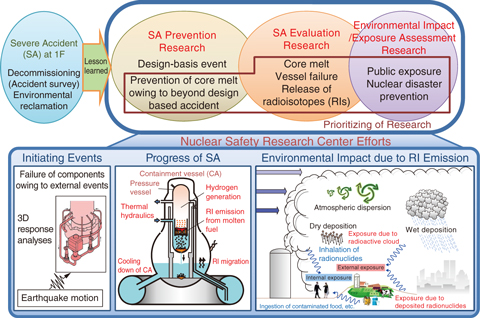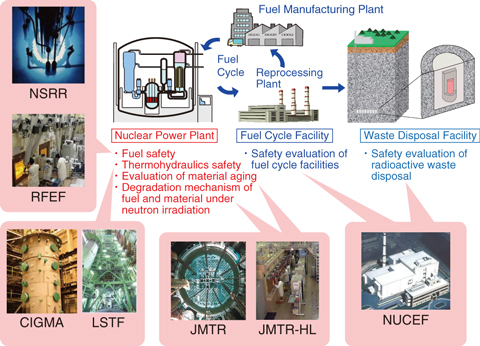
Fig.2-1 Directions of nuclear-safety research

Fig.2-2 Nuclear safety research areas and related JAEA facilities
To ensure the safe use of current nuclear facilities, the Nuclear Safety Research Center (NSRC) is studying the possibility of serious accidents at nuclear installations and their consequences. A massive and severe accident (SA) occurred at the TEPCO’s Fukushima Daiichi NPS (1F) as a result of the Great East Japan Earthquake and Tsunami. The NSRC has been collaborating with the Japanese government to institute appropriate emergency-response procedures. The specialists at the NSRC regret that they were unable to prevent the accident.
Continuous efforts should be made to avoid serious accidents while we utilize nuclear energy. A proper understanding of the situation is important for making the best and safest use of such technologies. In fact, the International Atomic Energy Agency, which investigated the accident at 1F, highlighted the importance of “continuous improvement”. To contribute to continuous improvement aimed at the highest level of safety, we have promoted studies on SA prevention and evaluation so as to reduce the risk of accidents at nuclear facilities and prevent nuclear disasters using analyses such as environmental impact assessments, as shown in Fig.2-1.
We are committed to safety research and have devoted various facilities to this cause, as shown in Fig.2-2. These special facilities allow for the handling of radionuclides and the simulation of accident conditions.
This chapter presents the results of recent research on the following topics: prediction of hydrogen behavior in a reactor-containment vessel during SA using the international benchmark exercise (Topic 2-1); evaluation of the amount of fuel-cladding-tube deformation through simulated loss-of-coolant accident tests (Topic 2-2); evaluation of the effect of the chemical form of fission products upon the pH of coolant water during SA (Topic 2-3); evaluation of the radiation-health-risk estimation using disability-adjusted life years (Topic 2-4); evaluation of the release behavior of Ruthenium by evaporation to dryness of highly active liquid waste (Topic 2-5); and investigation of future critical experiments for clarifying the criticality characteristics of fuel debris (Topic 2-6).
The following topic, solicited by the NSRC and related to the accident at 1F, is described in Chapter 1: evaluation of the migration of radioactive cesium by experiments on the burial of contaminated soil at public parks (Topic 1-16).